Humankind has been cultivating and enjoying apples for hundreds of thousands of years. Though some historic varieties have disappeared over the years, researchers and growers are constantly developing new apple breeds to meet the growing demand for this sweet, crisp, shelf-stable, low-calorie fruit that promises numerous health benefits.
These days, your average grocery store or farmer's market is ripe with variety in the apple department. From hulking sweet Honeycrisps to tart and toothy Granny Smiths, apples vary wildly in their looks, textures, and flavors. As a result, some are better for snacking while others are good for baking and or making applesauce.
I tasted 15 of the most popular apple varieties grown in the US to help direct you toward the best fruit of the season. Here's how these apples stacked up:
Red Delicious
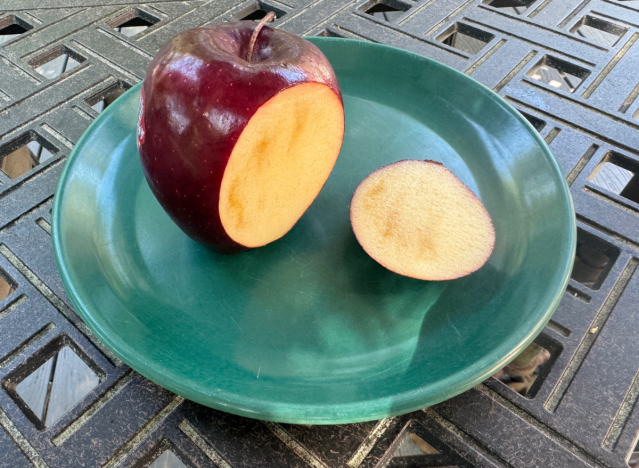
This ubiquitous apple variety is instantly recognizable, but as easy as it is to find throughout the year, it's also not winning any awards in flavor or texture.
The look: Red Delicious apples are tall and tapered. The dark red skin is shiny and attention-grabbing, but below the smooth, gleaming skin, the flesh is soft and often bruised.
The taste: This Red Delicious apple was bland and mealy tasting. The texture is soft, and something about it tastes old to me, like the apple has been sitting around in storage for a year.
Granny Smith
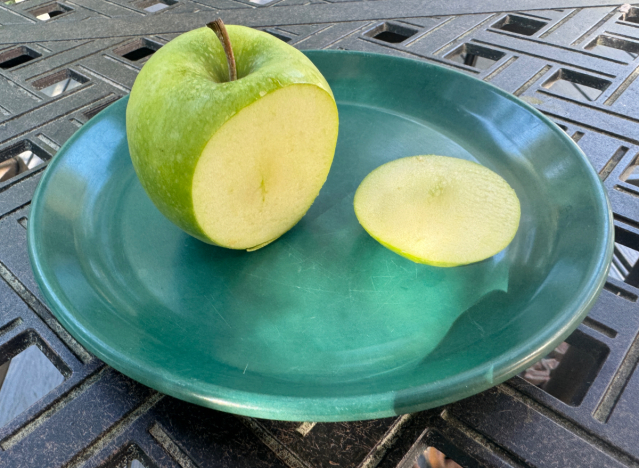
One of the few green apples I tested, Granny Smith is an old standby that's also fairly easy to find at any time of year.
The look: The apple has an almost neon-green color. It's round and plump with yellowish flesh.
The taste: Granny Smith is tart and bracing. It's grassy tasting and acidic, not nearly as sweet as some of the red apples I sampled. The texture was softer than others as well.
Gingergold
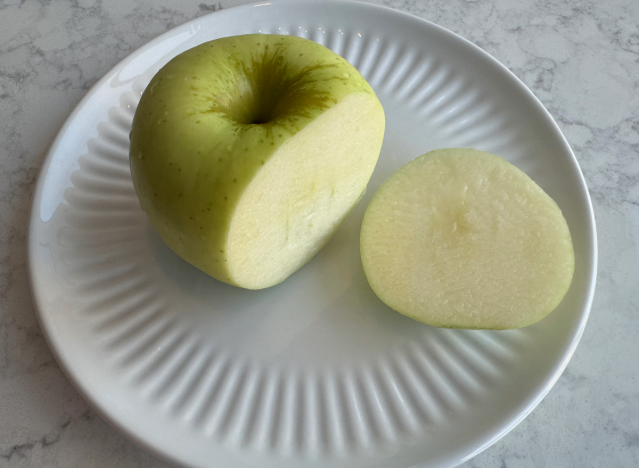
I hate to throw another green apple under the bus, but Gingergold was not my favorite of the bunch.
The look: This apple has chartreuse skin specked with darker green pocks. Its skin is smooth and matte and the interior is slightly tinged with green.
The taste: There really isn't much to say about how this apple tasted; it simply didn't. It's watery and bland, but the texture is delightfully crisp, and crunchy.
Jonagold
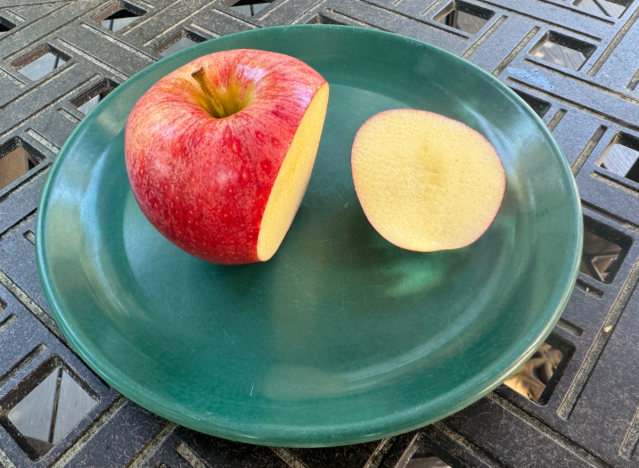
Jonagolds are the product of breeding a Golden Delicious apple with a Jonathan apple.
The look: Jonagolds are flushed with red, though some show more of their golden side. It's a thin apple shaped similarly to a Red Delicious and the skin is more matte than others.
The taste: I could taste the influence of the Golden Delicious in a big way in the Jonagold, which unfortunately isn't my favorite flavor. The apple tasted bland and a bit mealy.
Envy
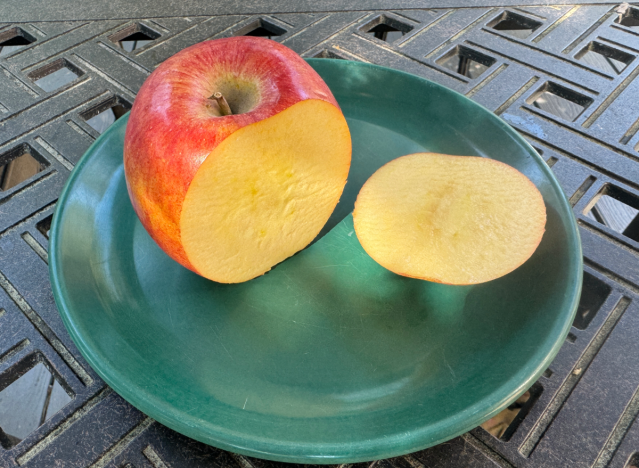
The Envy apple is produced by crossing Braeburn and Royal Gala apples. It's grown around the world, including in New Zealand, but most Envy apples you'll find in the States are from Washington State.
The look: This is a tall apple with a narrowly tapered base and broader, wider shoulders. It's heavily striped and speckled and is mostly bright red with a hint of orange and rusty brown here and there and a yellow-green crown around the stem.
The taste: The Envy tasted similar to the Red Delicious. It has an earthy flavor that's bordering on musty, and a softer texture that wouldn't hold up well in a pie.
Pink Lady
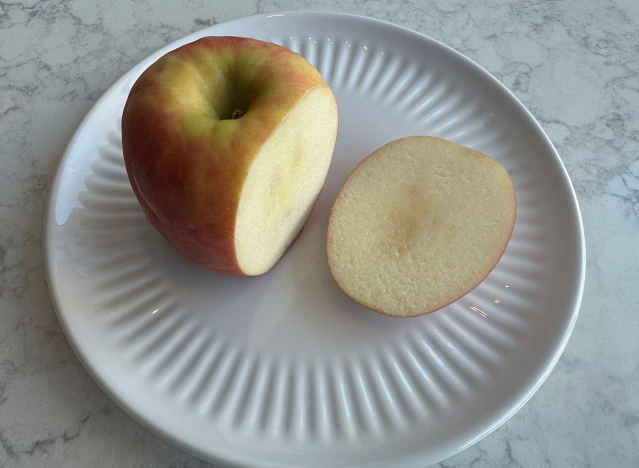
Pink Ladies are popular around the world, including in southern Europe, Australia, and Chile. They grow especially well in sunny climates. In fact, these are among the earliest trees to blossom each year, but the fruit is some of the latest to be harvested.
The look: The name speaks for itself; these apples have a rosy pink color that's bright and enticing. The flesh of mine was tinged slightly with brown.
The taste: I found the Pink Lady to be earthy tasting and not the sweetest. It's juicy and fresh, but not overly brimming with flavor.
Honeycrisp
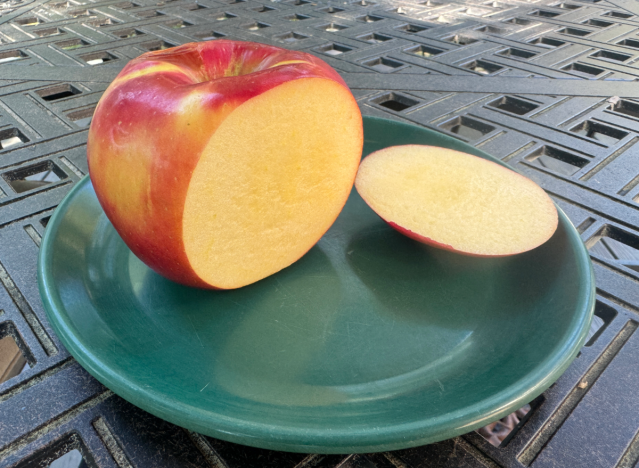
Somehow, the name Honeycrisp has become synonymous with pricey, designer apples. This variety is the product of crossing a Macoun and a Honeygold. It was invented at the University of Minnesota, and according to the Honeycrisp website, it can be stored in the fridge for up to four months.
The look: The Honeycrisp I sampled was the biggest of the bunch. It's a heavy, squat apple with stripes of yellow-green on the mostly red background. There are light speckles across the skin, and the interior flesh is, well, honey-colored.
The taste: My Honeycrisp had a softer texture and a very honeyed flavor. It's almost cloyingly sweet. It would be great for baking or apple sauce, especially when combined with more mild-tasting apples.
Kiku
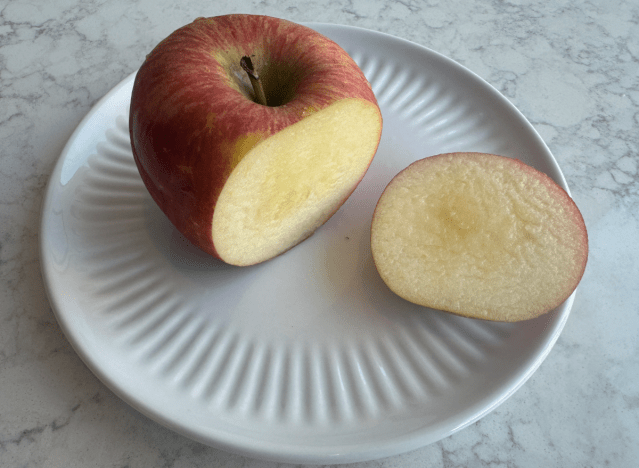
This apple was new to me. It's a derivative of Fuji apples and originated in Japan. It was brought first to Germany, then to the rest of the world, and is now grown worldwide.
The look: The Kiku is a nicely shaped, round apple with pretty green and red striations. The flesh is slightly yellow.
The taste: This is a mildly sweet apple with a high water content. It's crisp and juicy, but not the most flavorful.
Rave
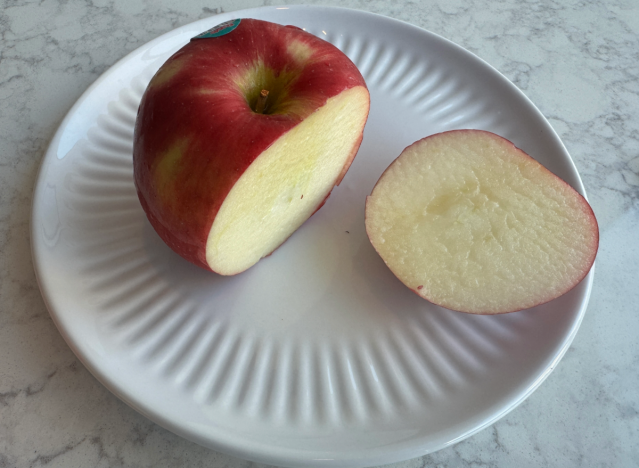
This rosy red apple is a signature variety from Stemilt orchards in Washington State. It's a cross between Honeycrisp and MonArk apples from Arkansas. This early-season apple is available in August and throughout September.
The look: Rave is shiny and the skin is smooth and lightly striped with pink and darker red hues. The flesh is snow-white.
The taste: This is a lovely, sweet apple for snacking. It has a mild flavor, but the softer texture isn't ideal for baking or cooking.
SweeTango
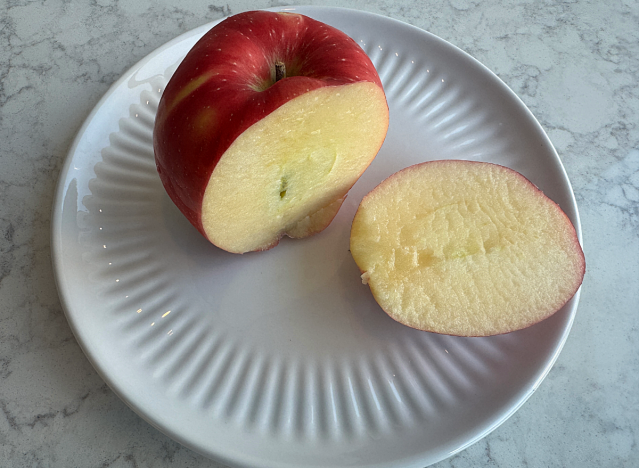
SweeTango apples were first released in 2009 after growers at the University of Minnesota crossed Honeycrisps and Zestars. They're now grown in the U.S. and Canada, including by the growers at Yes! Apples. They arrive in mid-August stick around until early December.
The look: I love the fiery pink color of the SweeTango. It's slightly flushed with yellowish-green and has light speckles across the skin.
The taste: This apple was shockingly tart and zesty. It has a bright, citrusy flavor at first that mellows out a bit as you chew. The astringent flesh is a little drying in your mouth, but the tartness keeps you coming back for more.
Cosmic Crisp
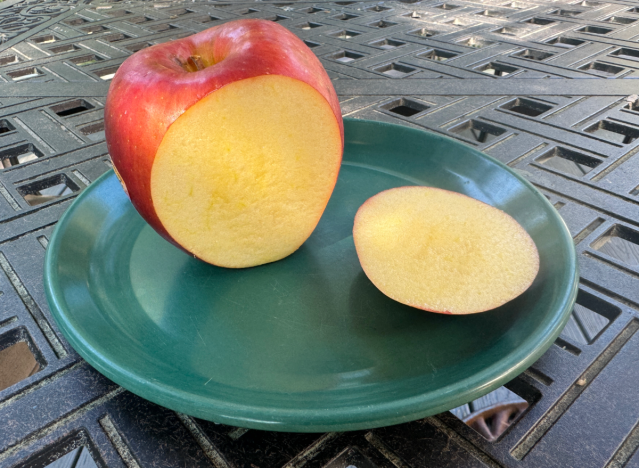
This apple is the product of 20 years of cultivation at Washington State University. It's a cross between Honeycrisp and Enterprise apples and was bred to resist browning after it's sliced.
The look: The Cosmic Crisp is a taller, more narrow apple. It has reddish-brown, slightly stripy skin and yellowish flesh.
The taste: This is a very crisp, juicy apple. It has a mild flavor, isn't overly sweet or earthy, and is a tasty apple for any time. The hard, crunchy flesh makes it more portable and less prone to bruising.
Gala
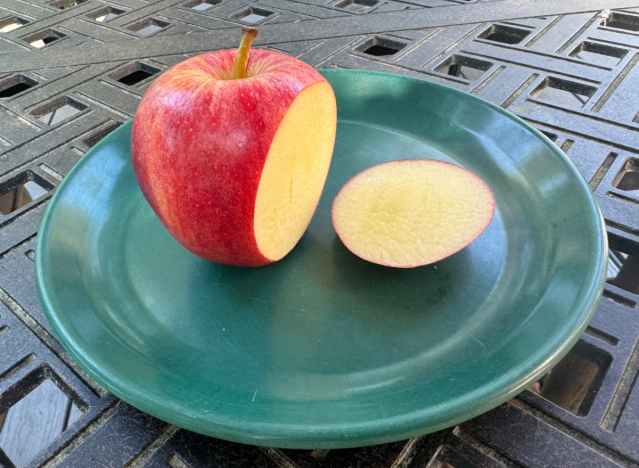
Galas, also called Royal Galas, are a popular choice for snacking. They're a cross between a Golden Delicious and Kidd's Orange Red and were developed in New Zealand. They're now one of America's most popular apples.
The look: Galas are stripy, pinkish-red apples with a hint of gold. They're roundish with a green stem and slightly greenish flesh.
The taste: This was one of the crunchiest apples I tried. It has a mellow flavor that's not overly sweet and a hard, crisp texture that would hold up well if baked into a pie.
Jazz
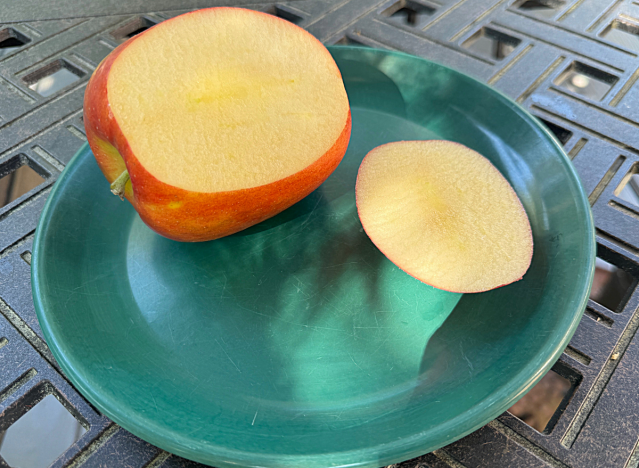
Jazz apples were invented in New Zealand, but are now grown around the world. They're a cross between a Braeburn and a Gala.
The look: The Jazz I sampled was one of the larger fruits in the bunch. It's a tall apple with bright pinkish-red skin speckled with yellow-green spots. The interior flesh is more textured and porous than other apples and is distinctly yellow.
The taste: This is a sweet, bright, and acidic apple. I loved the refreshing, astringent bite, but it did dry out my mouth quite a bit. That said, I'd happily enjoy a Jazz apple as a snack as long as I have some water to wash it down.
Paula Red
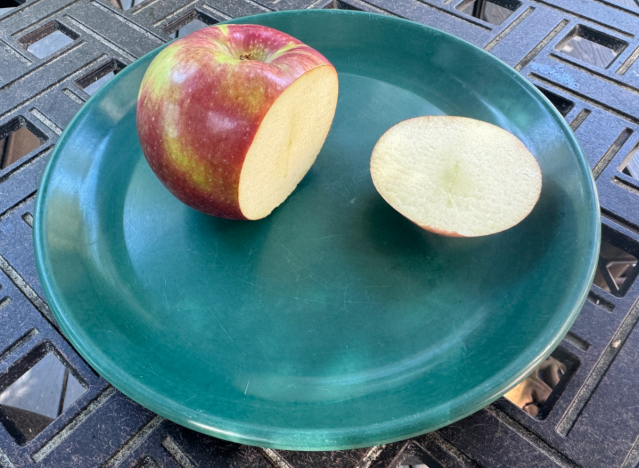
Paula Red apples are among the first available each year in the northern part of the U.S., with the first harvests happening in early August. It's thought to be related to McIntosh apples.
The look: The Paula Red is cute and round. It's a squat, plump red apple speckled with green splotches. Mine was a perfect snack size: not too big or skimpy.
The taste: The Paula Red had a bright and juicy flavor. It's slightly tart, but not sour. The texture is crisp enough to enjoy for snacking, but these apples would also cook up into a nice piquant applesauce with some texture to it.
Cortland
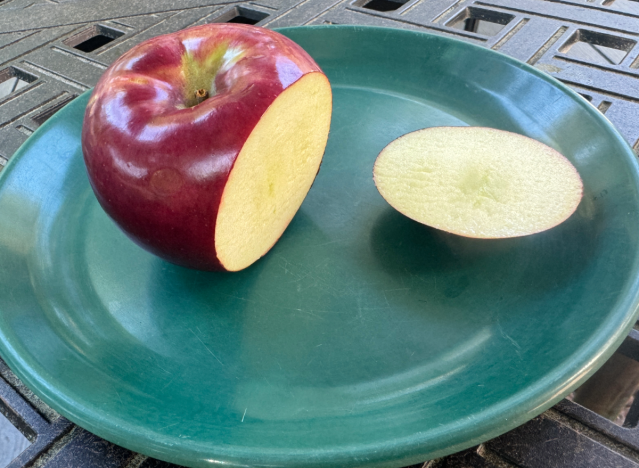
Cortland Apples were first produced in New York in the late 1800's. They're an early-season variety, with the first harvest happening mid-September.
The look: This apple is exceptionally shiny. It has a beautiful deep red coloring with blushes of neon green. The flesh is a bright, crisp white.
The taste: Cortland represents the perfect balance between tart and sweet. The apples are wonderfully juicy and fruity tasting with just the right kick of astringency. I love them in a salad or as a snack, but you can also bake up a mean apple pie with a Cortland filling.
No comments:
Post a Comment